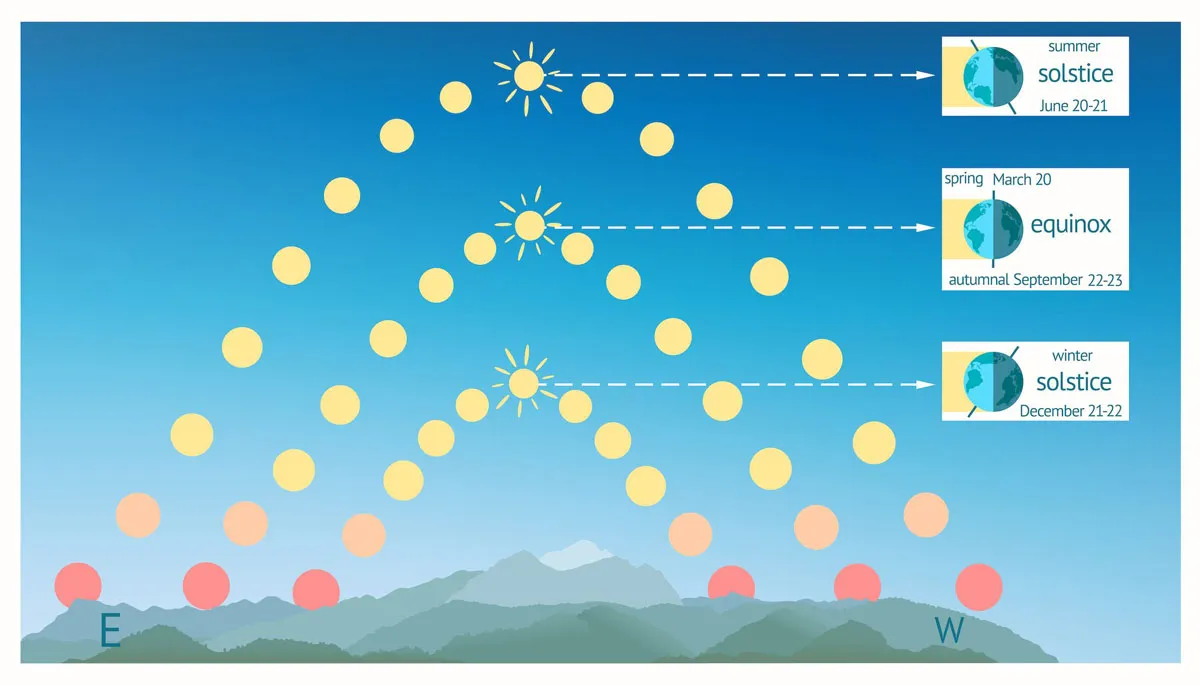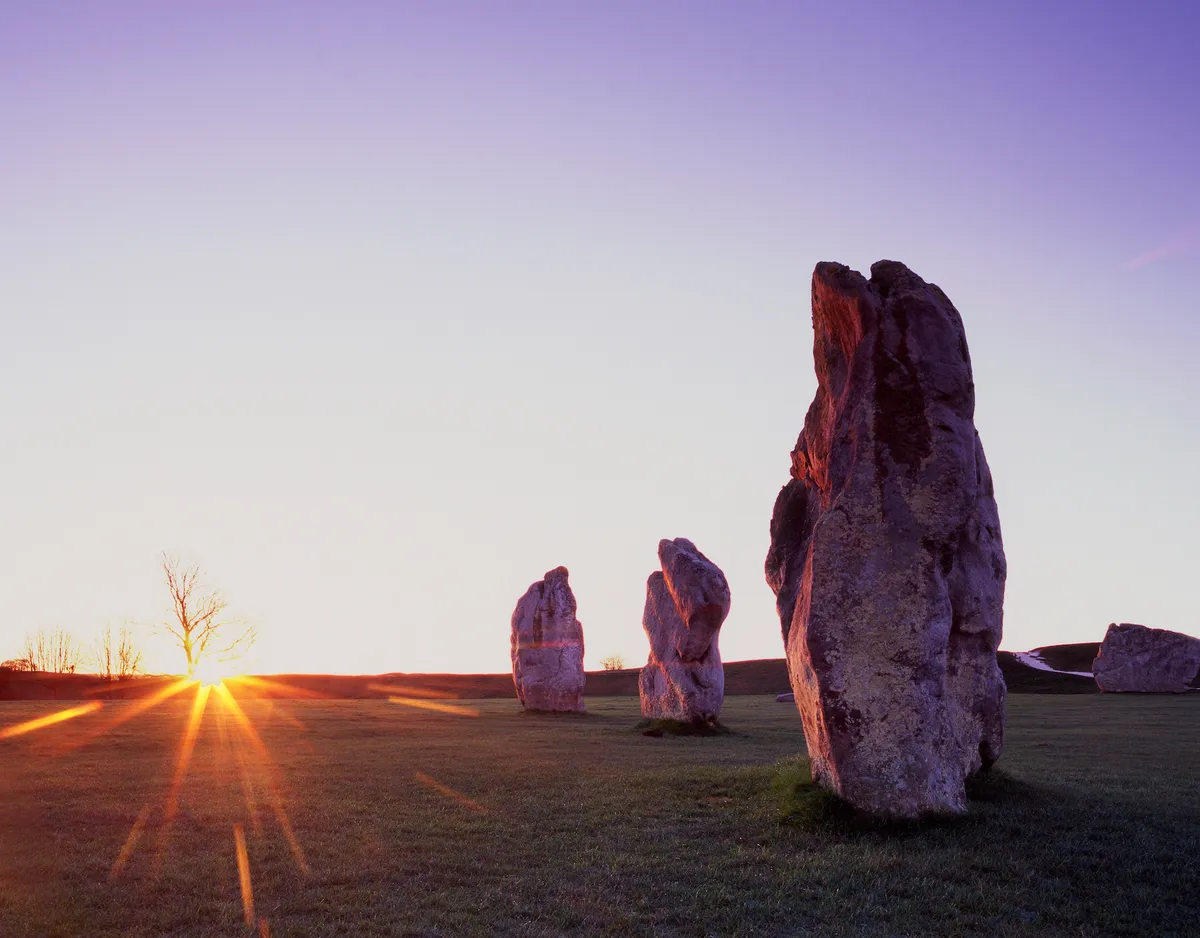Spring is finally here, and we’re exactly halfway between mid-winter and mid-summer. There are two equinoxes every year, one in March and the other in September.
The March equinox, also known as the vernal equinox, marks the beginning of astronomical spring in the northern hemisphere. This phenomenon has been observed – and celebrated – for thousands of years, and has important implications for astronomy and agriculture, as well as cultural traditions.
But when exactly is the spring equinox? And how does it affect the tides? Read on for answers to this and more.
For those who missed it, you can check out ourreader gallery of the Venus-Jupiter conjunctionfrom earlier in the month, and if you’re looking forward to clear nights this year, why not plan ahead with ourfull Moon UK calendarandastronomy for beginners guide?
When is the spring equinox 2023?
The spring equinox 2023 in the northern hemisphere is onMonday 20 March. The spring equinox marks the first day of spring, and the precise time of the equinox will be at 9:24pm GMT.
For the two hemispheres, the equinoxes are at opposites. When it’s the spring equinox in the northern hemisphere, it’s the autumn equinox in the southern hemisphere. For the purposes of this article, when we refer to the spring equinox, it is from the point of view from the northern hemisphere, and we are referring to the March equinox, unless stated otherwise.
What is the spring equinox?
So, what happens during the spring equinox? In simple terms, the spring equinox is when the Sun crosses the celestial equator (an imaginary line in the sky above Earth’s equator), going from the southern hemisphere to the northern hemisphere. As the Sun is exactly above the equator, both the northern hemisphere and the southern hemisphere receive nearly equal amounts of the Sun’s rays. In other words, the day and night are (almost) equal in both hemispheres.
The word ‘equinox’ derives from the Latin aequi, meaning ‘equal’, and nox, meaning ‘night’, so together, translates as ‘equal night’.
In reality, we will actually be seeing a few more minutes of sunlight at the spring equinox. This is thanks to refraction in the atmosphere that bends the Sun’s rays, causing the Sun to appear above the horizon when it’s actually below, resulting in slightly more daylight than darkness. The March equinox denotes the start of spring in the northern hemisphere, and the start of autumn in the southern hemisphere.
At the September equinox (the autumn equinox in the northern hemisphere), the Sun crosses the celestial equator again, this time going the other way, from the northern hemisphere to the southern hemisphere.

The exact point at which the Sun crosses the celestial equator during the spring equinox is known as the ‘First Point of Aries’. Back in the day, when the equinoxes were first observed by the Greek astronomer Hipparchus in 130 BCE, this point lay in the constellation Aries. Now, because of precession (as it rotates, the direction of the Earth’s axis wobbles and changes direction), it lies in the constellation of Pisces.
The First Point of Aries is slowly moving towards the constellation of Aquarius, at a rate of around one degree every 70 years. So, by the year 2597, the First Point of Aries will actually sit in Aquarius. It won’t be for another 23,000 years that the First Point of Aries will return home to its namesake.
What’s the difference between a solstice and an equinox?
The difference between a solstice and an equinox comes down to length. At the two equinoxes, the days and nights are almost of equal length, whereas the solstices mark the shortest (winter solstice) and longest (summer solstice) days of the year.
During the equinoxes, the Sun is directly above Earth’s equator. During the summer solstice, the northern hemisphere is at its maximum tilt towards the Sun, so the Sun appears at its highest, giving us the longest day of the year. During the winter solstice, the northern hemisphere reaches its maximum tilt away from the Sun, so the Sun appears at its lowest in the sky, giving us the shortest day of the year.

Why do the dates of the spring equinox change?
The spring equinox sometimes falls on different dates because the Earth takes a little over 365 days to complete a single orbit around the Sun. To be precise, it actually takes 365.25 days for us to orbit around our star. In the Gregorian calendar, they accounted for this by adding one extra day every four years, and this is why we have leap years.
This means that the March equinox occurs with approximately a six-hour difference from the previous year. The equinox last year, in 2022, was at 3:33pm, and this year, in 2023, it will be around six hours later at 9:24pm GMT. Similarly, next year in 2024, it will be at 3:06am.
But you don’t need to worry about remembering new dates every year; we’re stuck with the March equinox being on 20 March until 2044, when it’s on 19 March.
Dates and times of the March equinoxes, GMT
2023:20 March, 9:24pm
2024:20 March, 3:06am
2025:20 March, 9:01am
2026:20 March, 2:45pm
2027:20 March, 8:24pm
2028:20 March, 2:16am
2029:20 March, 8:01am
2030:20 March, 1:51pm
What is the difference between astronomical spring and meteorological spring?
Essentially, astronomical spring and meteorological spring are just two ways of defining the start of spring. Astronomical spring is what we’re talking about in this article, which is based on the position of the Earth in its orbit around the Sun. It begins on the vernal equinox (20 March in the northern hemisphere), when the Sun is directly above the equator, making day and night approximately equal in length.
Meteorological spring, on the other hand, is defined as the months of March, April, and May in the northern hemisphere, and September, October, and November in the southern hemisphere. This definition is based on the annual temperature cycle and is used by meteorologists for easier comparison of seasonal statistics.

While astronomical spring marks the beginning of the astronomical season,meteorological spring is more commonly used in weather forecastingand climatology, because it’s based on the months when the temperature and climate patterns are most consistent, and it’s easier to compare monthly and seasonal statistics.
How does the equinox affect the tides?
Declination is the angular distance, measured in degrees, of the Sun north or south of the celestial equator. When the Sun crosses the celestial equator at the equinox, the Sun’s declination is exactly 0°, as it’s not offset to the north or south. This happens twice a year, and, as a result, the gravitational effect of the Sun on the Earth is greater during the equinoxes.
This means that the Sun exerts a stronger pull on the Earth, because the equator of the Earth is lined up with the Sun. This results in a higher gravitational pull on the tides, and the tidal bulge gets bigger. Tides at this time are known as ‘equinoctial tides’. If you live near the coast, look out for greater-than-average ranges between high and low tide.
This effect was even described by Isaac Newton as far back as 1686, when he explained how the gravitational pull of the Sun and the Moon on Earth’s equatorial bulge affected movement of the Earth’s axis. This gave rise to what we know as ‘precession of the equinoxes’. If you’re in the mood, you can read the original Latin inscription of his book, Philosophiae Naturalis Principia Mathematica, over at Project Gutenberg.
How does the equinox effect the aurorae?
Aurorae and major geomagnetic storms tend to occur more frequently around the equinoxes.
During the March equinox, the south pole of the Sun is tilted towards Earth (the reverse is true during the September equinox, when the north pole of the Sun is tilted towards the Earth). The magnetic field lines around the Sun's equator loop back around, and back to the surface. But at the poles, they are open to space, extending out into the interplanetary magnetic field.

Although still poorly understood, during the equinoxes it is thought there is more contact between the magnetic field lines of the Sun’s poles with those of the Earth. When one of the Sun’s poles is tilted towards the Earth, it’s easier for ejected material to travel along these lines until they interact with the Earth’s magnetosphere. The charged particles that make up this ‘solar wind’ collide with nitrogen and oxygen molecules, resulting in the massive, dancing bands of the aurora.
Just like the Sun, the Earth has a magnetic field, known as a dipole field. This means the Earth has two magnetic poles (‘di’ meaning two), one at the north pole and one at the south pole. These magnetic poles are different to the geographic poles, and do not stay still relative to the Earth; they wander. As the lines of Earth’s magnetic field feed into the magnetic poles, the charged particles from the Sun are channelled towards the poles, and this is why we see more aurora at the poles.
Read more: